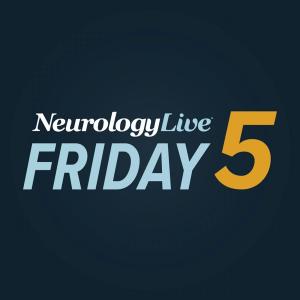|Articles|July 7, 2020
COVID-19 Linked to Potential New Neurologic Symptoms in Children
Author(s)Marco Meglio
One of the first case-series studies that analyzed children with COVID-19 suggest that SARS-CoV-2 should be considered for differential diagnosis in children presenting with new neurologic symptoms and splenium signal changes on MRI.
Advertisement
Results from a case-series study involving 27 children with COVID-19 pediatric multisystem inflammatory syndrome showed that a small subset of participants presented with new neurological symptoms involving both the central and peripheral nervous systems and splenial changes on imaging.1
Among the patient cohort observed in the study, 4 (14.8%) who were previously healthy had new-onset neurological symptoms. The symptoms documented were encephalopathy (n = 4), headaches (n = 3), brainstem (n = 2) and cerebellar signs (n = 1), muscle weakness (n = 4), and reduced reflexes (n = 2).
Senior author Yael Hacohen, MD, PhD, National Institute for Health Research academic clinical lecturer in pediatric neurology, Queen Square Multiple Sclerosis Center, University College London, and colleagues noted that all 4 of the patients needed intensive care unit (ICU) admission for the treatment of their COVID-19 pediatric multisystem inflammatory syndrome. Their ICU stays lasted a median 6.5 days (range, 2—14), and mechanical ventilation duration was a median of 5 days (range, 1–7). Additionally, magnetic resonance imaging (MRI) revealed splenium signal changes in all 4 of the patients.
Among the 2 patients whose cerebrospinal fluid (CSF) was tested, acellular samples showed no evidence of infection on polymerase chain reaction or culture, as well as negative oligoclonal band test results. “The negative cerebrospinal fluid results, the response to immunosuppression, and the clinical overlap with hemophagocytic lymphohistiocytosis suggest that this is likely to be immune mediated,” Hacohen and colleagues concluded.
Electroencephalography was found in 3 patients and showed a mild excess of slow activity. Mild myopathic and neuropathic changes were observed in all 3 patients tested on nerve conduction studies and electromyography.
Fever (n = 4), cardiovascular shock (n = 4), rash (n = 4), and dyspnea (n = 2) were all among systemic manifestations observed in the study. Tests for N-methyl-Daspartate receptor, myelin oligodendrocyte glycoprotein, and aquaporin-4 autoantibodies had negative results in all patients.
As part of the COVID-19 pediatric multisystem inflammatory syndrome management, immunomodulatory therapies such as intravenous methylprednisolone (n = 2), dexamethasone (n = 2), intravenous immunoglobulin (n = 2), anakinra (n = 2), and rituximab (n = 1) were used.
By the end of the study, neurological improvement was seen in all patients, with 2 making a complete recovery. The remaining 2 were discharged from the ICU and remained inpatients.
Each patient included in the study was younger than 18 years of age and presented with severe acute respiratory syndrome coronavirus 2 (SARS-CoV-2) infection and neurological symptoms between March 1, 2020 and May 8, 2020. Confirmation of the infection was done by either a quantitative reverse transcription-polymerase chain reaction assay by nasopharyngeal swab or a positive test result for IgG antibodies against SARS-CoV-2 in serum.
Data on demographics, comorbidities, neurological symptoms, relevant investigations (of CSF, neuroimaging, and neurophysiology), treatments, and outcomes were retrieved from the electronic patient records.
“Although the imaging finding is not specific to SARSCoV-2, in that it has been previously seen with other viral infections, clinicians should be adding SARS-CoV-2 to their differential diagnosis for children presenting with new neurologic symptoms and this imaging finding while still exploring other possible causes,” the study authors concluded.
Previously published data has drawn links between symptoms of COVID-19 and their effects on neurological status, but few have focused solely in the pediatric population. One of the first multi-case studies of neurologic manifestations of COVID-19 demonstrated complex central nervous system involvement and raised further questions about pathological mechanism. More specifically, those with confirmed infections of COVID-19 commonly had peripheral nervous system and skeletal muscular manifestations as well.2
In early June, another case-based study confirmed those data. This time, results from a systematic review of patients diagnosed with COVID-19 admitted to a hospital in a Spanish population during March 2020 revealed that neurological manifestations were common, with more than half of the patients presenting with some variation of neurological symptoms. Of 841 patients hospitalized with COVID-19 (mean age, 66.4 years; 56.2% men), 57.4% (n = 483) developed a neurological symptom. At the early stages of infection, nonspecific symptoms such as myalgias (17.2%), headache (14.1%), and dizziness (6.1%) were the most reported.3
In an attempt to understand the risk factors involved for patients with multiple sclerosis (MS) to possibly develop a severe form of the novel COVID-19 infection, results of a recent study suggested that neurological disability, age, and obesity were all associated with severe infection . The data also showed there was no link between exposure to disease-modifying therapies (DMTs) and COVID-19 severity.4
REFERENCES
1. Abdel-Mannan O, Eyre M, Lobel U. Neurologic and radiographic findings associated with COVID-19 in children. JAMA Neurol. Published online July 1, 2020. doi: 10.1001/jamaneurol.2020.2687.
2. Mao L, Jin H, Wang M, et al. Neurologic manifestations of hospitalized patients with coronavirus disease 2019 in Wuhan, China. JAMA Neurol. Published online April 10, 2020. doi:10.1001/jamaneurol.2020.1127
3. Romero-Sanchez CM, Diaz-Maroto I, Fernandez-Diaz E, et al. Neurologic manifestations in hospitalized patients with COVID-19: the ALBACOVID registry. Neurology. Published online June 1, 2020. doi: 10.1212/WNL.00000000000009937.
4. Louapre C, Collongues N, Stankoff B, et al. Clinical Characteristics and Outcomes in Patients With Coronavirus Disease 2019 and Multiple Sclerosis. JAMA Neurol. Published online June 26, 2020. doi:10.1001/jamaneurol.2020.2581
Newsletter
Keep your finger on the pulse of neurology—subscribe to NeurologyLive for expert interviews, new data, and breakthrough treatment updates.
Advertisement
Related Articles
 NeurologyLive® Friday 5 — September 12, 2025
NeurologyLive® Friday 5 — September 12, 2025September 12th 2025
 Expanding the Alzheimer Drug Development Pipeline
Expanding the Alzheimer Drug Development PipelineSeptember 12th 2025
Latest CME
Advertisement
Advertisement
Trending on NeurologyLive
1
FDA Hands Complete Response Letter to SL1009 for Pyruvate Dehydrogenase Complex Deficiency
2
Expanding the Alzheimer Drug Development Pipeline
3
Shared Decision-Making and Ethics in Complex Neurology Clinical Research: Paul Ford, PhD
4
Patient-Reported Study Identifies Common Symptoms and Timing During Migraine Prodrome
5













































